
You might think that taking great pictures when you're out scrambling would be easy - that capturing precipitous drops, unencumbered by ropes and belays, would allow stunning pieces of art to be created to impress your friends and the UKH gallery voters. The reality however is that scrambling can be as hard to portray in photographs as climbing.
While having serious consequences if it goes wrong, scrambling doesn't tend to take place on vertical walls. There will generally be walking sections between the hands-on action, and a profusion of rubbly ledges and vegetation to render your pictures less exciting than they may have felt at the time. In addition, wider angle lenses can dilute any steepness that may potentially be in the shot. For all these reasons, getting consistently dramatic results from your scrambling photography requires much more than luck. Here are some tips and tricks that should help you get some cool shots while staying as safe as possible.
Attach yourself to the mountain
Safety is the number one concern. Depending on the route, the conditions and your own level of experience, you may often go scrambling without a harness. For easier routes of grade 1 and 2, it is pretty standard not to be roped up. Being de facto rock climbs, harder routes are a bit of a grey zone, and there are certainly places where the use of hardware is more common - on Skye for instance, where your day may involve an abseil, or short sections of graded climbing. But even on easier hillwalker's scrambles, some basic safety gear can help you exploit the prime positions for photography, without at the same time having to worry about holding on for dear life. Looking through a viewfinder while balanced precariously on a knife edged ridge can be dizzying at the best of times! A minimalist safety setup for photography would be a lightweight harness and a couple of slings. Use these to secure yourself to a spike or block, obviously once you've checked to make sure it's solid, and you can then afford to devote your whole attention to the camera.
Consider the angles
Photography gives us the chance to present a different perspective on the world around us, and getting funky with angles can help to show things from an unusual point of view. Bum shots are the curse of all climbing and scrambing photography; it's rare that standing directly below your mate will yield a decent picture. As when shooting climbing, getting side on to the action can vastly improve your scrambling composition, and help to give a truer sense of the nature of the route.
That said, I will still sometimes shoot from below. One way to create a sense of drama, for instance, is to shoot low and come to the ridge with the climber above you. This can really accentuate the feel of height and steepness. Shooting from above can also be effective, especially if you can lean out a bit (with care - this is where the safety gear can be handy).
To make the best of the angles I use a 17-40mm lens on a full frame camera. If you're using a compact system then you'll want to find a lens from 10-35mm or thereabouts to give you a chance to get close to the action and still capture some cool drops and background.
One of my favourite images taken on the Cuillin ridge was using a 8-15mm fisheye. The fisheye lens gives a very dramatic perspective and if its a quality lens then it can be super sharp as well.
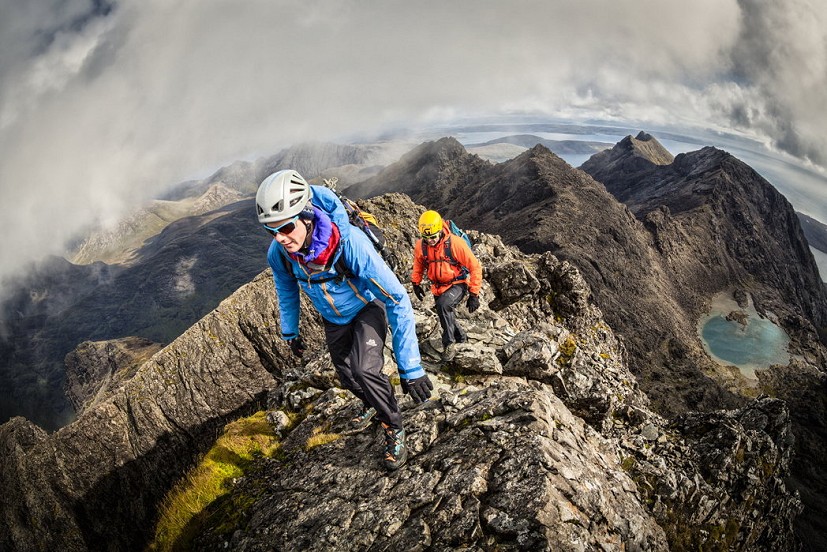
Think about the whole picture
The scrambler may be the focus of the picture, but do consider the whole composition too. Background and foreground can both add a lot of weight to the image, so think about what you want in the background and then how to create a sense of depth by creatively using foreground textures and colours. I always try to find the 'drama' in a scene. Photography is the art of subtraction - if we choose what to take out of the view, then what we leave in will speak volumes. Habitually I'll be looking for drama in the clouds, the rock, reflections, shadows etc. Be aware of what the light is doing, too, and what it might do in the next few minutes
Pre-visualisation
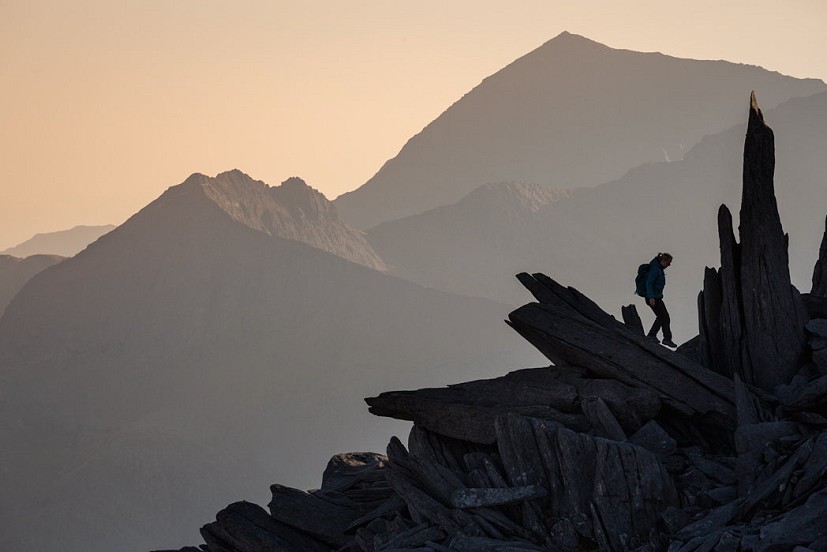
Imagine the shot you want. Picture the camera angle, lens choice, camera settings and the position of the scrambler. This is a useful technique and works well if you know the route that you're going to be on. But even if it's new ground, having a picture in mind of the shot you want can be helpful, so when you come across something thats starts to light up the neurons you're already there with your ideas. It is also a good plan when you're out without a camera to make a mental note of locations that you think would work, and return to them later with friends to make that cool shot. This also gets you into the habit of thinking about composition as part of your normal day to day thought processes.
Keep your friends close
I've been fortunate enough to have worked on a number of photographic and film projects on Skye, and when I'm working I'll nearly always have an assistant with me - someone to help carry kit and if need be hold a flash or give me a rope if I want to get somewhere awkward and need a bit of protection to stay safe. But even if you're just out informally with pals, a friend can help out to give you a belay if you want to get out to the edge of a route to get a shot. Choose patient friends to go scrambling with, people who don't mind taking a bit of time to help you get good shots.
Keep the colours bright
It almost goes without saying but I'll say it anyway - get everyone to wear bright Euro colours. Reds, yellows, oranges, bright greens, electric blues can all bring life to the dull light days that are sadly so common in the cloudy British hills. You might feel a bit of an idiot walking about town, but out in the hills eye catching colour is key. Avoid at all costs that awful sight which we seem to love in the UK of the climber or walker clothed head to toe in black and grey. What is that about? You're not a hill ninja, you are just spoiling an otherwise brilliant photo! Get some colour in your life.
Direct the action
Don't hold back: as the photographer, it's perfectly normal to direct how or where the climbers will be. Even if the route may bypass a section, I will, if I think it's going to give us a good shot, ask someone to get themselves into a certain position on the rock for the sake of the shot. But that comes down to seeing opportunities and how your eye and brain work. It is however something that you can train, so keep looking around for good positions and possibilities, and don't be afraid to ask.
Work with the weather
Clear sunny days can actually be a bit boring, photographically. On the other hand, mist and cloud can give some very dramatic effects, so learn to work with rather than fight against the weather. So long as its not pouring with rain, making the rocks perilously slippy, I love the extra dimension that dramatic skies can bring to an image, and creative editing can bring even a grey image to life.
Taking a leaf out of the landscape photographer's book and getting up early and staying out late can really pay dividends, with the most interesting light and cloud conditions of the day tending to occur around sunrise and sunset. And as an added bonus you can generally get the route to yourself outside the middle-of-the-day rush hour. When shooting into the sun, I usually try to pick an aperture of f16 to give me a tight starburst rather than a white blobby sun - it just looks much better in images.
Filters
All my lenses have Hoya UV Pro1 filters on them to protect the front element from being scratched. The only other filter I would consider taking is a circular polariser to help cut through haze if you're wanting to get landscape type images when up high. However to avoid vignetting you may need to remove the UV filter depending on the focal length of the lens and the thickness of the polariser.
Keeping your kit safe
Scrambling is hard on camera gear. I will normally carry my camera in a top loader holster bag with a lightweight krab to attach it to the back loop of my harness to keep it out of the way. It needs to be readily to hand - putting the camera safely in your rucksack is the best way to ensure that you take no images from the climb. Obviously compact cameras are easier to carry and sometimes I carry a small Sony A6000 (or equivalent) which gives reasonable quality images for its size and weight. Of course you can just use your phone, but you will be limited by lack of any control over settings and an equivalent of 24-30mm focal length, without getting into the realm of 17mm equivalent on a 35mm sensor. Technology is coming on all the time, but results with a phone or even a compact camera are still far less reliable than you'll get with an SLR.
Learn how to use camera settings
Many people are happy keeping the camera settings on Auto for everything, and that's fine up to a point. But its worth thinking about using shallow depth of field sometimes, and shooting with the aperture wide open. This can give a nice sense of separation between the layers in your image. Now your scramblers aren't going to be moving super fast, but you will still want to shoot with a shutter speed of at least 1/100 sec to avoid blurry limbs and camera shake, so have a think about what iso you need to give you a decent shutter speed to work with. Modern digital cameras handle higher iso far better than older models - often I shoot at iso 800 and above to keep my shutter speed high and avoid unwanted blurring.
If you're keen and can convince/bribe a friend to hold a flash for you then getting funky with flash in the outdoors can open up new possibilities too. For this you'll need wireless triggers, I use elinchrom Skyport triggers, and you'll need a powerful external flash. The popup flash on little cameras just isn't going to do much when you're in bright sunlight and even speed lights will struggle. I use an Elinchrom 400W ELB system that gives me a lot of control, flexibility and power to shoot directly into the sun and still get a well exposed subject. It's a bit of a faff and more gear to carry around, so I only do it if I'm shooting commercially or want to experiment with some ideas and compositions. But give it a go and you might be surprised at the results.
Nadir Khan is an adventure sports and landscape photographer and film maker based in the UK. He runs adventure photography courses at Glenmore Lodge.
"The things that inspire me are great light, dramatic clouds, landscape and some cool action" he says, "whether it's bikers, climbers, runners or kite surfers, being able to communicate the emotions that I feel when making the images is a privilege."
For more about Nadir, and a bigger selection of his work, see his website nadirkhan.co.uk or follow his posts on Facebook
He is sponsored by F-stop gear, Elinchrom and Vango F10
- Photography for Winter Hillwalkers 9 Dec, 2016



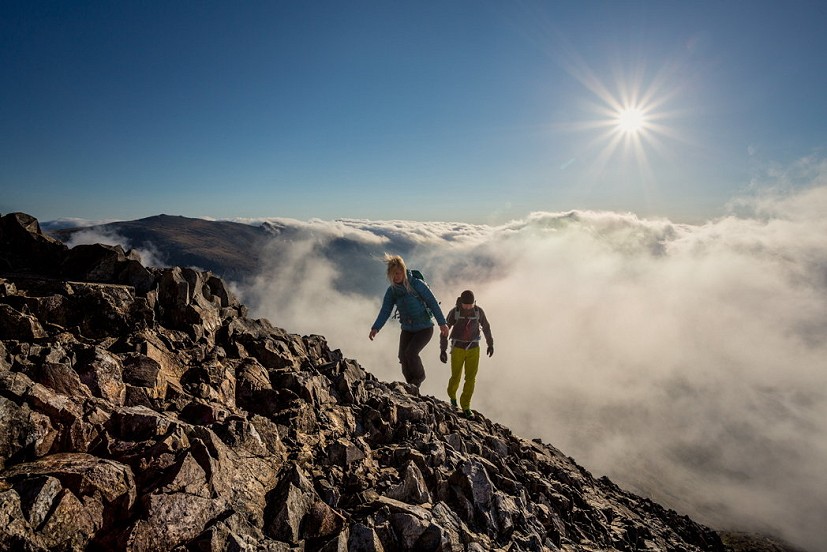
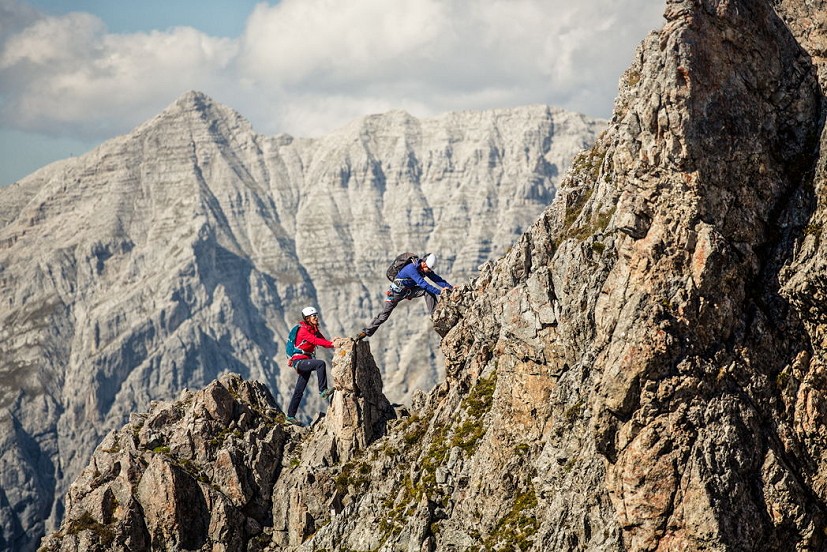
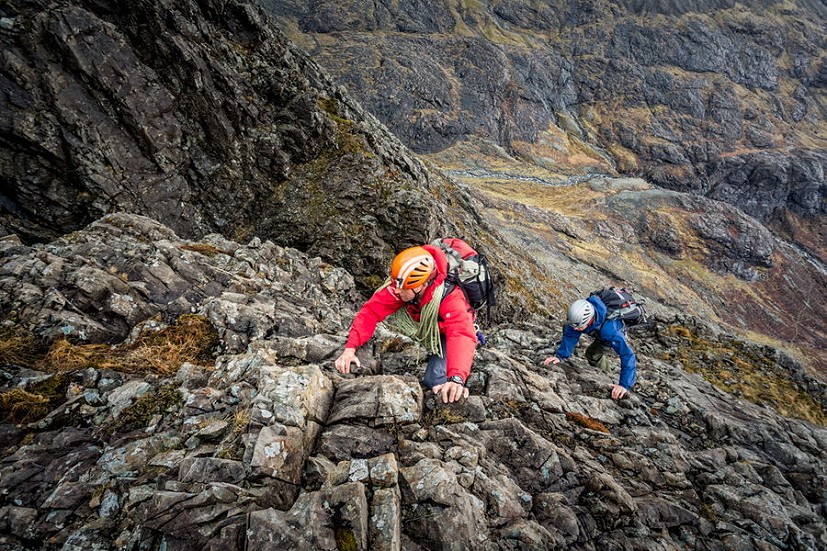
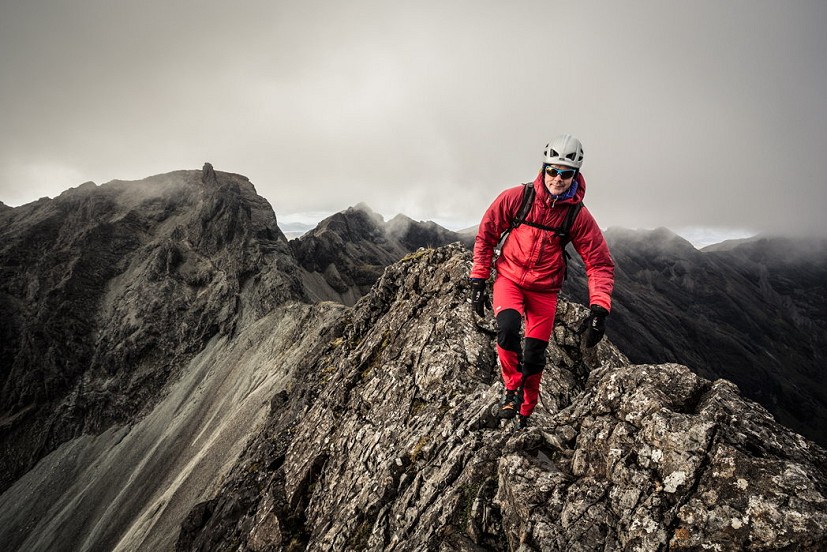
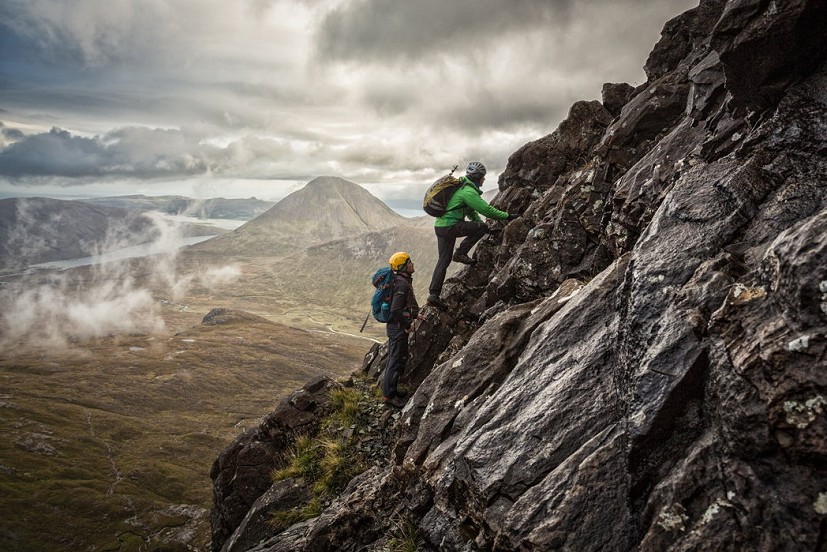
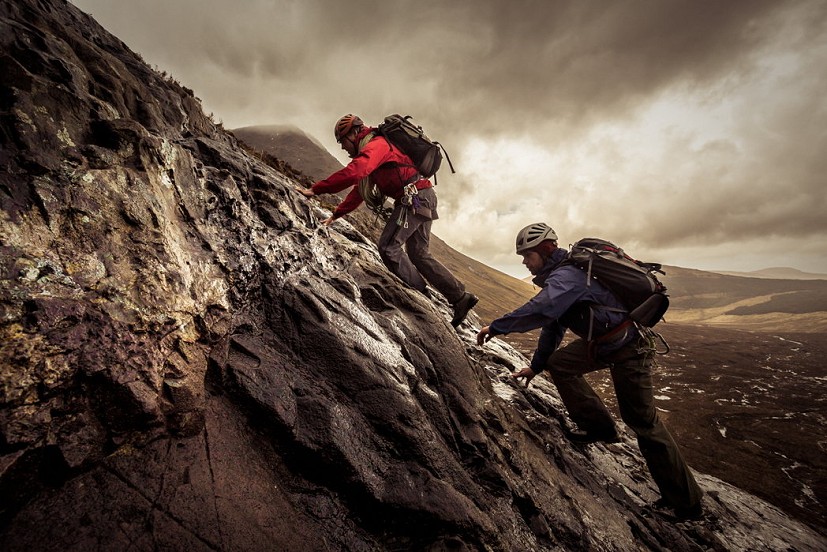
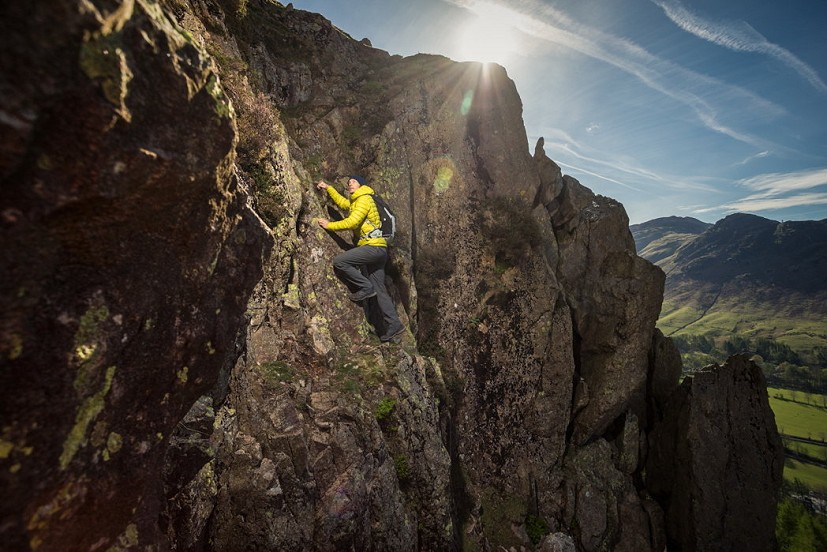
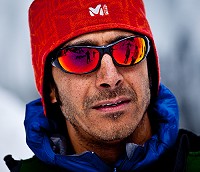



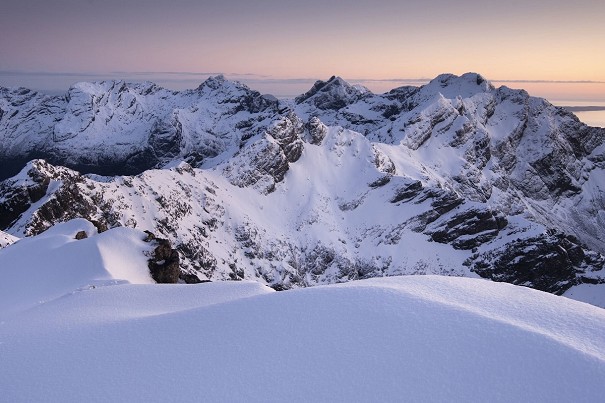


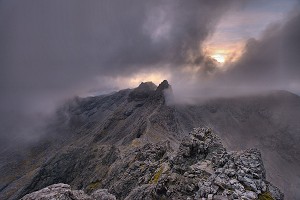
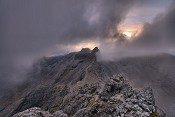
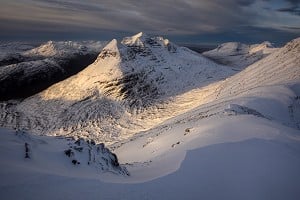
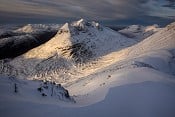
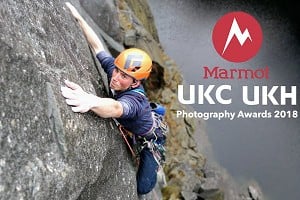
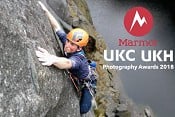

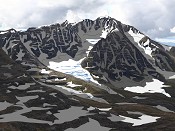
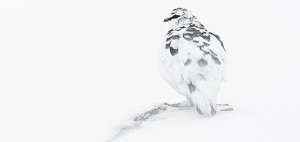

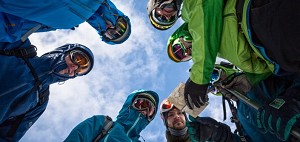

Comments